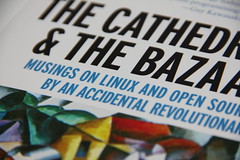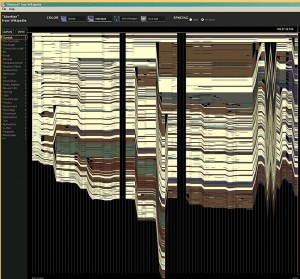
In my credo, I state that I will always be a writer first. I’m working on the 2nd draft of a novel, I write everyday and I attend a writing class every other week. This class is precious to me, but recently, I made the extremely painful decision to skip a writing class in order to attend the event “An Evening of Talks with Double Union and Ashe Dryden.”
And so I gathered with others, our reflections co-mingling with the Bay lights in abstract patterns and crossing signals releasing an energy collected through resistance into the San Francisco night. The purpose of the evening was to raise funds for San Francisco’s first feminist hacker/maker space, Double Union. You can read more about that effort, here.
The featured speakers were Ashe Dryden (@ashedryden), Valerie Aurora (@adainitiative), Missy Titus (@missytitus), Dr. Kortney Ryan Zeigler (@fakerapper), Alaina Percival (Women Who Code) @alaina, Shanley Kane @shanley, Amelia Greenhall @ameliagreenhall.
It was refreshing that:
- I didn’t have the usual space bubble around me that I normally do at tech events. Unless I go with someone, I find most meet ups and conferences are actually pretty lonely and there is usually this space bubble of a chair in every direction between me and other people even if I use double deodorant. Ok, it’s usually guys who are at the outer edge of the bubble. Although I didn’t know too many people, the crowd was quite friendly which cut down slightly on the terror. (Yes, I actually am very shy like everyone else in tech).
- Shanley’s slides emphasized the general state of fucked up-edness in tech and software and it was like basking in the harsh daylight of reality. We need more of this.
- There were none of those stupid, heckling, troll-types in the audience discounting the points the speakers were making or trying to play the speakers off of one another. I get so sick of stupid people saying, “well HER blah blah blah was SO MUCH BETTER.” Like it’s only ok to allow 1 female to be good at anything. There were 7 people on that stage and they were all awesome.
What I learned:
- That I need to take stock of my own privilege. I hadn’t heard about this before last night, but it makes sense. Before you can understand who is different from you, it’s important to know your own self and the benefits that you’ve had in life.
- Ashe Dryden suggested wearing a color to a conference and introducing yourself to others wearing the same color so you get a different type of cross-section. I really want to try this and see what happens.
- There is a need for a harassment policy at every conference, even ones that are all women because women can be homophobic and/or culturally insensitive. I’ve reached out to Cascadia.js about their policy and pointed them towards the template on geek feminism.org
- I’m really really really really done with tone policing myself online, on my blog, etc. Although I’m already fairly WYSIWYG in my writing and in life, I can do better. This includes engaging with men I know already in the tech community. The post I wrote on Medium still stands because I’m committed to supporting people around me when they try to do better. It’s just that I’m done with people patronizing me or playing me off of other women online. This will likely require me to educate myself more about feminism, and I look forward to that.
- I want to write more about diversity in tech AND THAT’S OK. I can write as many blog posts as I want about being a woman working in tech AND THAT’S OK TOO. I’m tired of feeling guilty every time I have an idea for a blog post on gender or diversity as if I’ve written too much about it or that the world doesn’t need to hear more. At this point, I’ve written a few (Links: 1, 2, 3, 4, 5) and every time I think to myself, “How badly do I need to say this at the expense of looking less technical.” This is who I am and what I want to write about it. If you want technical, go check my Github. FUCK IT.

I feel an awakening in the tech world and in San Francisco.
It’s needed in many ways. Aside from the misery of the many who are marginalized, tech has been invading San Francisco’s friendly, collaborative culture and razing it to make way for Nerds Acting Like Jocks. It’s about time some of San Francisco began bleeding into some part of the tech community because we’ve bled enough of our own city.
Ashe specifically mentioned the need for everyone in the room to bust out of our own tech bubble and put more energy into experiencing the non-tech world. In San Francisco, we live in the heart of the counter-culture and it’s time to be more open to the lessons our neighbors and our city have to teach us.
Even without much of a membership or much of a space, the collective of people that makes up Double Union has already managed to bring us together in a way that reverberates through time and our own static-y channels. It was a privilege to attend this signal gathering.
















